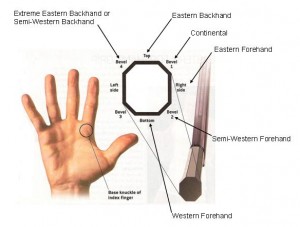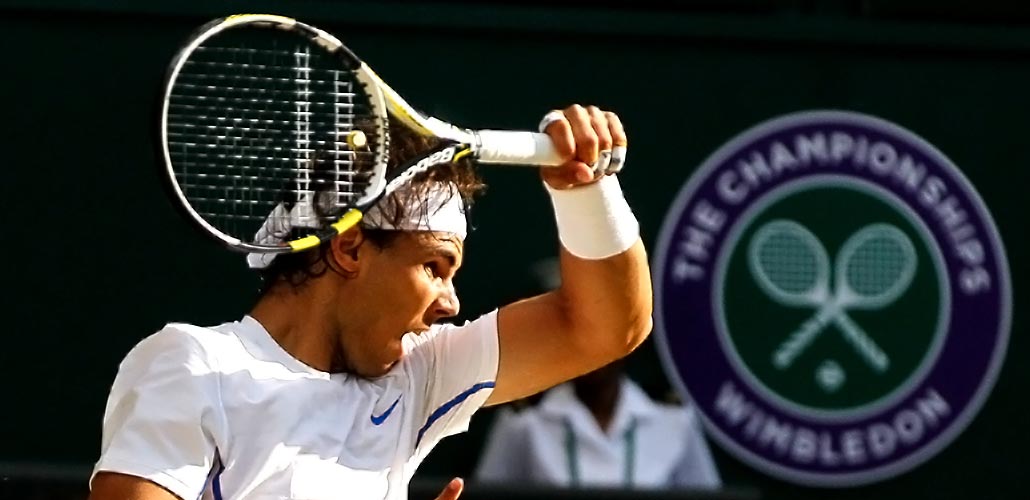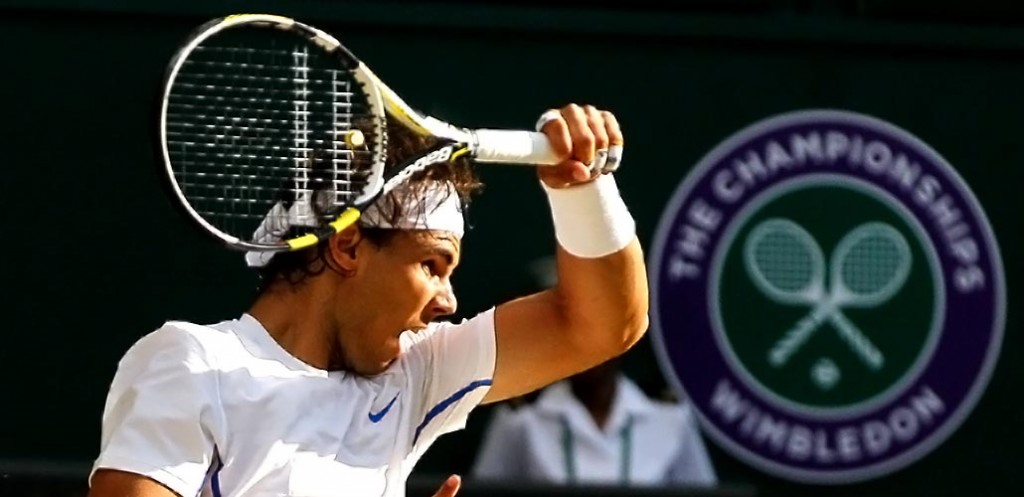Using the Opposite Hand to Improve Your Tennis Game – Part 2
In the last article I talked about how the opposite hand can be used to RELAX the grip hand during groundstrokes. We learned to make a “shelf” for the racket, creating a great balancing point that allowed our dominant hand to ease up on the tennis grip and hopefully do away with any tennis elbow problems or tension in the arm. Now we will discuss the number-two reason to use the opposite hand while playing tennis.
The second most important reason to use the opposite hand in tennis is for switching the grips. Most recreational players try to find different grips for their groundstrokes or volleys using their dominant hand; this is OK, but the opposite hand can do a much better job. It is much easier to find angles in the racket face using your opposite hand, than the bevels on your grip using your dominant hand. So here is how we’re going to do it.
In Part 1 we created that “shelf” for our racket by placing our opposite hand up high on the throat of the racket and placing our index finger on the strings. We also learned to relax the grip hand between each shot with our newly-created shelf. Now it’s time to learn to switch the grip with our opposite hand and let the dominant hand just come along for the ride. I call the opposite hand the “computer chip” to the racket; it should give us all of the information we need for grip changes and taking the racket back for preparation.
Put the racket “in the shelf” using your opposite hand. Now place the palm of your grip hand right on top of the grip. This is your neutral grip (also “continental grip,” “hammer grip,” or the “shake hands” grip). It should literally feel like you’re shaking hands with the racket. This grip is best used for volleys (forehand and backhand), serves, slice, and overheads.
Now, using your opposite hand, turn the face of the racket back and forth, keeping your dominant hand loose and relaxed on the grip. You should feel the handle of the racket moving in your dominant hand. There — you just learned to switch grips using your opposite hand. Not so bad, right?
Here is an easy practice drill you can do right in front of the TV that will help you get used to using your opposite hand to switch grips. For the purpose of the practice drill, I will be talking as if I’m right-handed: My left hand is my opposite hand (the “computer chip”) and the right hand is the grip hand. Lefties, do everything opposite.

This handy chart shows you where to place your base knuckle on the bevels of the racket to achieve different tennis grips.
First, create your shelf with the opposite hand. Remember, your opposite hand should be high up on the throat, with your index finger on the strings. Your grip hand should be in a neutral grip or like you’re shaking hands with the racket. Now, hold the racket right out in front of you with the racket head up. Keeping your bottom hand relaxed, turn the racket face to your left, or counter-clockwise. Good: You switched the grip for your forehand. In tennis terms, they call this “closing the racket face.” How much you close it depends on your comfort level. I, for instance, use an Eastern grip, so I close my racket face slightly to the left; if the top edge of my racket were a clock, it would turn to 11 o’clock.
If I close the racket angle to left to about 45 degrees, or 10 o’clock, I will be in what’s called the Semi-Western grip. If I close the angle to 90 degrees, or 9 o’clock, I will be in a Western grip. The more I turn to the left, the more extreme my grip gets and the more the racket face closes down. It’s that simple. For you one-handed backhand players out there, you should definitely be using your opposite hand to switch the grip for the backhand. Instead of closing counter-clockwise or left, turn the racket face clockwise or right and find the grip you like.
One very important note: As you practice shutting down the racket face for your grip changes, make sure you always come back to the neutral grip before changing it again. Practice going to the left and back again to neutral, then right and back to neutral. There, you got it — nice job! Now your computer chip is sending the right information to the grip.
If you want to Master the Game of tennis, watch how top-tier pros such as Federer, Djokovic, and Nadal use their opposite hand for changing grips on their groundstrokes.


